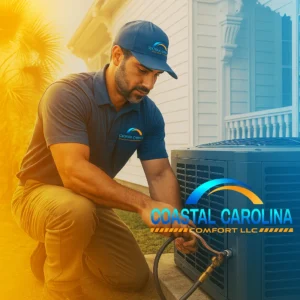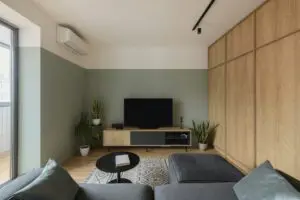If certain rooms in your home feel more like saunas in the summer or chilly caves in the winter, you’re not alone. Uneven temperatures are a common frustration for Charleston homeowners, especially during those sweltering Lowcountry summers. These hot and cold spots can make it hard to truly feel comfortable and may even be a sign that something in your home’s heating or cooling system needs attention.
While it’s tempting to put up with temperature differences or try a quick fix like a portable fan, these workarounds usually fall short. Addressing the problem at the source leads to better results and prevents bigger issues down the line. Fixing hot and cold spots isn’t just about comfort. It also helps reduce wear on your HVAC system and can improve indoor air quality. Let’s take a closer look at what could be causing these temperature differences.
Common Causes Of Hot And Cold Spots
Uneven temperatures usually come from a mix of small issues that add up. Here are a few of the most common causes:
– Poor insulation: If parts of the house don’t have adequate insulation, outside air can sneak in and throw off the balance inside. Older homes often have patchy insulation, especially in attics, basements, or exterior walls.
– Blocked or poorly placed vents: Vents that are blocked by furniture or rugs can’t deliver enough airflow to a room. Likewise, vents placed in corners or under windows where heat or sun exposure is heavy may not keep up.
– Airflow imbalance: Your HVAC system depends on balanced airflow to move heated or cooled air through every room. If the system is unbalanced, some rooms will get too much air while others get too little.
– Leaky ducts: If there’s a leak in the ductwork, especially in spots like the attic or crawlspace, air escapes before it reaches its destination. That’s a lot like trying to fill a pool with a cracked hose. The air just doesn’t make it.
– Aging or undersized HVAC equipment: Sometimes the system just can’t keep up. If the HVAC unit is too small for the house, or if it’s reaching the end of its service life, it may struggle to provide even cooling or heating throughout the home.
Temperature differences are more than a comfort issue. They also challenge your HVAC system to work harder just to maintain a steady temperature somewhere in the house. That means greater energy usage, more breakdowns, and shorter system life.
Identifying Problem Areas In Your Home
The first step to solving temperature imbalance is figuring out exactly where it’s happening and why. Homeowners can do a bit of investigation before calling in professional help.
Start by walking through each room of your house at different times of day. Pay attention to how each space feels. Is one bedroom warmer than the rest by early afternoon? Does the downstairs stay cool while the upstairs roasts? Sudden shifts in comfort can highlight where the problem spots are.
To get more precise, many people use an infrared thermometer. Pointing this tool at the walls, floors, and ceilings allows you to spot small differences in temperature across rooms or surfaces. Some homeowners also schedule a home energy audit, where a technician uses tools like pressure gauges and thermal cameras to measure insulation and airflow.
Here’s a short list to help you recognize those hot and cold spots more easily:
1. Feel for drafts around windows, doors, or vents.
2. Look for vents that have furniture or rugs blocking airflow.
3. See if your thermostat sensor is located in a poor spot, like next to a heat source or cold air vent.
4. Pay attention to any rooms where the HVAC fan sound seems louder or softer than others.
5. Note areas that heat up more quickly when sunlight comes through windows.
Spotting the pattern helps when it comes time to address the root cause. Whether it’s moving a piece of furniture off a vent or something more serious like duct repair, identifying the source puts you one step closer to a more balanced, comfortable home.
Professional Solutions To Resolve Hot And Cold Spots
Once you’ve identified where the temperature imbalances occur, it’s time to tackle them effectively. Here are some common professional solutions that can help bring your home back to a comfortable equilibrium:
– Insulation upgrades: If inadequate insulation is your issue, consider adding or replacing it, especially in older homes. Properly insulated walls, attics, and floors keep your home snug against the outside elements, maintaining a more consistent indoor temperature.
– Sealing air leaks: Air leaks often occur around windows, doors, and other openings. Professionals can seal these leaks, stopping drafts and preventing conditioned air from escaping. This simple fix can make a significant difference.
– Ductwork optimization: Over time, ductwork can accumulate dust and debris, blocking airflow. Professionals can clear out these obstructions and ensure ducts are clean and fully sealed. This helps balance airflow and distribute air evenly throughout your house.
– HVAC zoning systems: Zoning systems divide your home into different areas or zones, each with its own thermostat. This allows for precise control over the temperature in each space, reducing hot and cold spots by delivering air where it’s needed most.
– System evaluation: Sometimes an older or undersized HVAC unit can’t meet your home’s demands, leading to temperature inconsistencies. Evaluation by HVAC experts can reveal whether your system needs repair or an upgrade to perform effectively.
These improvements help fix comfort issues and can also extend the life of your HVAC system by making it run more efficiently.
Maintaining Consistent Comfort
Achieving even temperatures is great, but maintaining that balance requires ongoing effort. Regular HVAC maintenance is important for keeping your system running smoothly. Here’s how to keep everything in check:
1. Schedule regular check-ups: Have your system inspected at least twice a year. This ensures that everything from filters to fluid levels and electrical parts stays in working order.
2. Change air filters: Dirty filters block airflow and force your HVAC system to work harder. Check them monthly and replace when needed to keep the system running at peak performance.
3. Adjust thermostats: Use programmable thermostats to better control your home temperature throughout the day. This helps cut down on sudden hot or cold changes and saves energy too.
4. Keep vents clear: Make sure furniture or curtains aren’t blocking your vents or returns so each room gets the airflow it’s supposed to.
5. Monitor for changes: If you notice a room that’s suddenly hotter or colder than usual, it could be a sign that something needs checking. Catching it early avoids larger repairs later.
Getting into these habits goes a long way toward keeping a comfortable atmosphere in every room, no matter what the season brings.
Keep Every Room Comfortable All Year Long
Addressing hot and cold spots in your home can seem like a lot to take on, but with the right approach and expert help, it’s completely doable. Finding and fixing the source of the problem helps make your space more comfortable and can prevent wear and tear on your HVAC system.
Even temperatures across your home don’t just improve comfort. They also make it easier on your heating and cooling equipment, helping it last longer and run more efficiently. Simple upgrades like proper insulation, sealed ductwork, or a zoning system can truly change how it feels to live in your space.
Taking action early helps avoid bigger issues later. If something feels off, it’s better to get it looked at sooner than wait. Whether it’s moving furniture from a vent or replacing aging equipment, every improvement helps you enjoy your home to the fullest all year long.
Ensuring your home stays comfortable throughout the year starts with proactive solutions tailored to your space. If you’re dealing with uneven indoor temperatures, it may be time to reach out for professional support. Homeowners can rely on trusted HVAC companies in Summerville for proven strategies that restore comfort. Coastal Carolina Comfort is ready to help you create a balanced, energy-efficient home you can enjoy every day.


